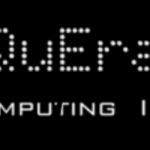How scalable quantum-safe blockchains help against network outages

(NewsBTC) The Post-Quantum Blockchain is the next step in blockchain technology, leveraging the power of post-quantum cryptography to ensure that data is stored securely and cannot be tampered with, so they can rely on the integrity and security of their data. In contrast to existing blockchains, which rely on the pre quantum RSA, post-quantum blockchain uses encryption algorithms like NewHope, NTRU, Frodo, SIDH that are more secure against current quantum computers. IQT-News summarizes below a recent article by Bitcoin & Cryptocurrency News discussing post-quantum.
While talking about the security of the blockchain we also have to look at the scalability of the blockchain in order to execute the smart contracts on it. Here comes the impossible trinity into play which says that every blockchain network is constrained by this popularly known Scalability Trilemma – scalability, security, and decentralization. Theory suggests that a blockchain network is trying to max at one factor at the expense of the remaining two factors. Eg. If a blockchain network focuses on increasing scalability, then the security and the decentralization of the particular blockchain get hit.
This has caused multiple projects that are built on these blockchains to crash as well. The issue with current blockchain appears to have been caused by too many transactions being processed at once—about 400,000 in total. The average capacity that Solana (SOL) can process is around 65,000 transactions per second and this resulted in the network becoming congested and crashing.
Addressing the future of post-quantum computations, Cellframe promotes itself as a blockchain-agnostic platform (“Layer Zero”) that can interact with Bitcoin (BTC), Ethereum (ETH) and so on. This design unlocks unmatched opportunities in terms of scalability and accessibility.
Cellframe offers the same level of scalability for all associated decentralized applications (dApps), DeFis, NFT marketplaces, play-to-earn ecosystems, and so on. New “Cell Chains” can be added to this architecture again and again. Within the ecosystem, they work like shards of NEAR Protocol or Ethereum 2.0. Every element of the system can be easily isolated in the event of an attack.
Supersingular curves and lattice permutations are used as the basis. Implementations of such algorithms for public key communications are already available on the network. As such, the system has a virtually infinite bandwidth, impressive flexibility and unmatched scalability.
Creators of cells can mitigate scalability issues by launching additional “cells” on the same infrastructure. In different systems, cells can be integrated into various use cases. Cellframe instruments are suitable for both entrepreneurial and retail use.
Sandra K. Helsel, Ph.D. has been researching and reporting on frontier technologies since 1990. She has her Ph.D. from the University of Arizona.



















